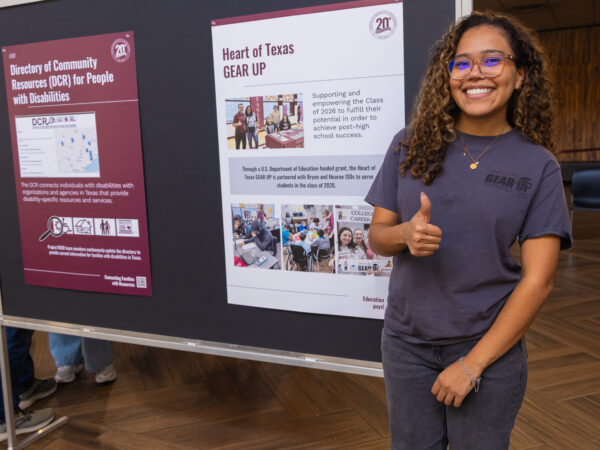Texas A&M study finds arts education positively impacts student performance
The argument for maintaining arts education in schools has typically been ‘art for the sake of art’, but art class is more than just glue sticks and field trips. In a recent study, Dr. Daniel Bowen proved that arts education positively impacts student outcomes by increasing writing achievement, decreasing disciplinary infractions and increasing compassion.
“We found a significant increase in writing achievement, which is pretty big news,” Bowen said. “This is really the first instance we have of finding rigorous evidence to support that claim.”
Bowen, an assistant professor in the Department of Educational Administration and Human Resource Development, evaluated the impacts of arts education programs in Houston schools.
Participating schools received money from the Houston Endowment, which they would have to match to accumulate a set amount spent on each student’s art experiences.
Arts experiences ranged from ballet field trips to artist residencies. The schools chosen through random assignment were ‘treatment schools’ and schools not selected to receive funds yet were ‘control schools’. This research method ensured that differences in outcomes could confidently be attributed to effects of the arts programs.
“Demonstrating art’s impact in a rigorous manner is critical for making the case for the arts, because policy makers in education are increasingly relying on empirical evidence to justify allocating limited budgets to particular programs in areas of schooling,” said Bowen.
Significant results
The students’ writing improvement was measured by how they performed on the State of Texas Assessments of Academic Readiness writing assessment, or STAAR test.
“This supports a hypothesis that the arts improve expression and things that are captured in writing assessments,” Bowen said.
Disciplinary offense rates also indicated positive outcomes from arts education. After boosting arts education, there was a reduction in the proportion of students who were receiving disciplinary infractions.
“Basically 3.6 out of every 100 students who previously received disciplinary infractions were now no longer receiving a disciplinary infraction,” Bowen said.
He said this may be attributed to students using arts education as an outlet, channeling energy into productive art experiences rather than behavioral incidents. The result could also stem from an environmental change in the school as a whole once arts education was made a priority.
“There is something that the arts are driving in terms of social, emotional learning and development,” Bowen said.
Students also reported an increase in compassion for others. Bowen says this finding is also significant, but needs to be further explored as the result was drawn from students self-reporting on a survey.
Bowen’s passion for art education stems from his participation in an improv class in middle school. He credits the class with building his confidence in school. Similarly, early in his career he taught middle school and directed an improv club.
“I saw it had the same impact on my students, especially those who seemed to struggle with core subject areas or things that are assessed on the day to day,” Bowen said. “They really thrived and it seemed to really help engage them in school.”
Bowen said this study is just the start in finding conclusive evidence supporting arts education. He said more studies should be conducted to investigate which specific art experiences produce different types of impacts on students, as well as whether these effects present similarly in different geographical settings.
“These outcomes were definitely surprising and I think they certainly merit further investigation,” Bowen said.
Bowen hopes to continue exploring art education’s impact on schools to help policy makers recognize arts education as a top priority.
Learn more about Dr. Daniel Bowen.
Dr. Brian Kisida from the University of Missouri co-authored this research.
This research was made possible by funding from the Houston Endowment, the National Endowment for the Arts and the Spencer Foundation.
Research efforts were also supported by the Houston Independent School District through the Houston Education Research Consortium.
About the Writer
Heather is responsible for news coverage in the Department of Health and Kinesiology, as well as the Department of Educational Administration and Human Resource Development.
Articles by HeatherFor media inquiries, contact our Media Relations Coordinator, Ashley Green
Fundraising
To learn more about how you can assist in fundraising, contact Amy Hurley, Director of Development ahurley@txamfoundation.com or 979-847-9455














